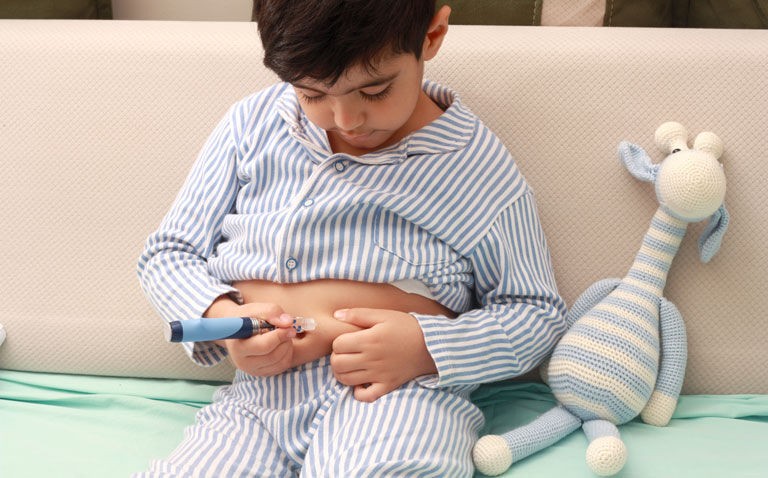The risk of type 1 diabetes is significantly elevated in children and adolescents more than 30 days after an infection with COVID-19
A study presented at the European Association for the Study of Diabetes (EASD) annual meeting by Norwegian researchers suggests that the risk of developing new-onset type 1 diabetes is significantly elevated among children and adolescents, more than 30 days after an infection with COVID-19.
Type 1 diabetes (TID) is a chronic, autoimmune disease that is influenced by both genetic and environmental factors and characterised by the destruction of insulin-producing cells. It also appears to be on the increase with a 2019 study finding that the pooled estimate across European centres continued to show a 3.4% increase per annum in incidence rate, suggesting a doubling in incidence rate within approximately 20 years in Europe.
There is some data to suggest that the onset of type 1 diabetes can be initiated after respiratory infections that give rise to the common cold, influenza-like illness, sinusitis, and laryngitis/tracheitis. Moreover, while some evidence suggests that COVID-19 can trigger severe diabetic keto-acidosis in those with new-onset diabetes, there is no hard evidence that the virus can induce T1D.
As a result, for the study presented at EASD, the Norwegian team undertook nationwide register-based study to test whether infection with COVID-19 was associated with an increased risk of developing TID in children and adolescents.
Using the Norwegian preparedness register that is updated daily with individual-level data on PCR-confirmed COVID-19 infections, vaccinations and disease diagnoses from primary and secondary health care, the team linked individual level data for children and adolescents. Individuals were then followed from the start of the pandemic (1 March 2020) until diagnosis of type 1 diabetes, age 18 years, death, until March 2022 (whichever came first).
The researchers used both a test-negative design and a full population cohort to examine the relationship between the first type 1 diabetes diagnosis within or after 30 days post-COVID-19 infection. The results were expressed as hazard ratios which were adjusted for age, sex, non-Nordic country of origin, geographical area and socio-economic factors.
Type 1 diabetes and COVID-19 infection
A total of 424,354 children with COVID-19 infection (of 1,202,174 children included at study start) and 990 incident cases of T1D were identified .
Using the test negative design, the adjusted HR for type 1 diabetes at least 31 days after COVID-19 infection was 1.63 (95% CI 1.08 – 2.47, p = 0.02). However, less than 30 days post-infection, the adjusted hazard ratio was not significant (HR = 1.25, 95% CI 0.72 – 2.17, p = 0.42).
For the whole population cohort, the adjusted hazard ratio was 1.57 (95% CI 1.06 – 2.33, p = 0.03) and again was not significant for less than 30 days post-infection.
Based on these findings, the authors concluded that COVID-19 infection is associated with increased risk of subsequent T1M.
Citation
Gulseth HL et al. SARS-CoV-2 infection and subsequent risk of type 1 diabetes in 1.2 million children










